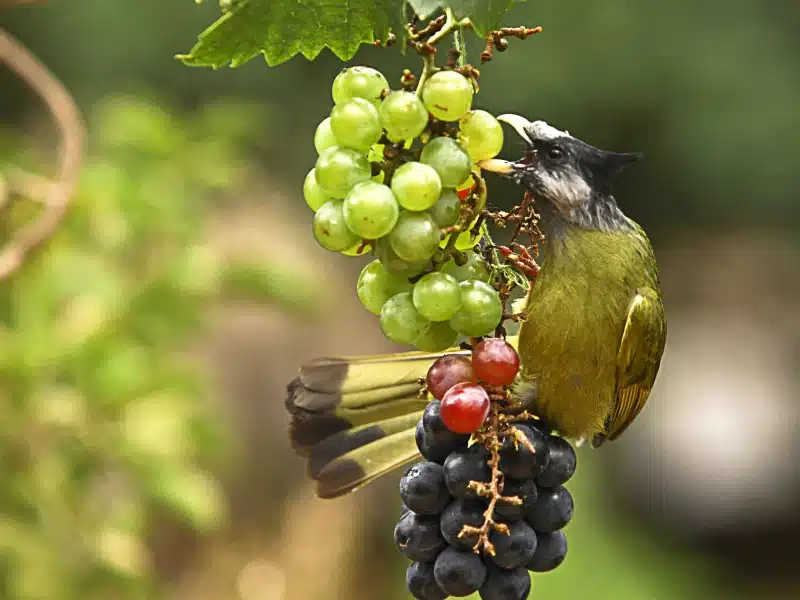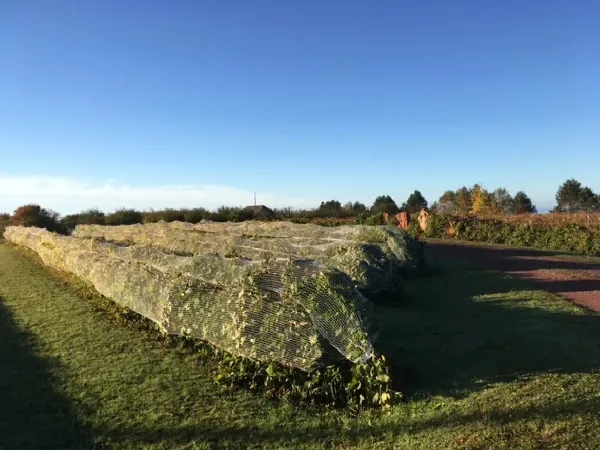As a grape grower, you’re likely all too familiar with the “feathered thieves” that flock to your vineyard during the grape ripening season. These small creatures not only feast on your grapes but also damage their appearance, which can impact your income directly or indirectly. In the short term, they might reduce your yield, and in the long term, they could harm your market reputation. Protecting your grapes from bird damage is a critical task that deserves serious attention.
In this article, INSONSHADE will explore various bird control strategies with you, helping you find the best method for your vineyard and ensuring you achieve the highest economic returns.
Why Birds Are a Vineyard’s Biggest Enemy
As a grape grower, you know that birds are practically the “number one enemy” in your vineyard. These pests seem to have a better grasp of the grape growing cycle than we do, always targeting the grapes just as they ripen. They devour the fruit one by one, perch on the vines, and make a mess of the plants, causing significant headaches.
According to the “Grape Pest Management Guide” by the University of California Agriculture and Natural Resources, sparrows, starlings, chickadees, and bush jays are frequent culprits that invade vineyards. These birds often arrive in flocks and can cause severe damage in a short time. Research shows that bird damage can result in a loss of up to 20-30% of your yield in some cases. To prevent these unwelcome guests from impacting your harvest, proactive bird control measures are essential.
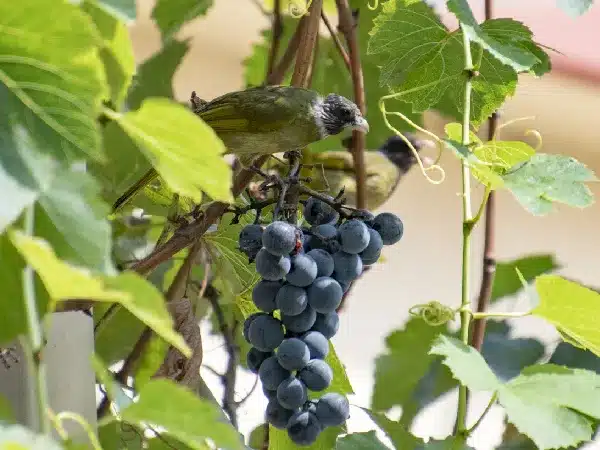
Grapes ripening as birds arrive
Next, we’ll delve into several scientific and effective bird control methods to help you protect your valuable grapes. While this article lists eight main categories of bird control strategies, each category includes multiple specific methods. This allows you to choose the most suitable combination of protection measures according to your specific needs.
The Most Effective Bird Control Strategies for Vineyards
1. Netting Protection
Bird netting is considered one of the most effective bird control measures. These nets are usually made from durable polyethylene or nylon materials and come in various mesh sizes to deter different types of birds. Whether it’s large nets covering the entire vineyard, smaller nets protecting individual vines or clusters, or side nets pulled across from the sides, they can effectively block birds.
Don’t Miss: How to Choose Bird Nets for Your Vineyards
To install, secure the netting to posts or ropes, ensuring it remains over the vines throughout the growing season, thus preventing birds from invading. Although bird netting is highly effective, it tends to be more expensive compared to other bird control measures.
However, in recent years, bird netting has faced opposition from bird enthusiasts who argue that it could harm birds. Additionally, the netting might cause some inconvenience during operations and harvesting, requiring you to plan and adjust appropriately before the fruit matures.
Overall, bird netting is a long-term investment that can significantly reduce bird damage and effectively protect your grapes. It’s definitely a worthwhile ally.
2. Bagging
Bagging the grapes is a straightforward and convenient bird control measure that also provides some protection against insects and diseases. Given the increasing bird damage in recent years, it’s recommended to choose high-quality paper bags or nylon mesh bags to prevent birds from pecking through, especially small birds.
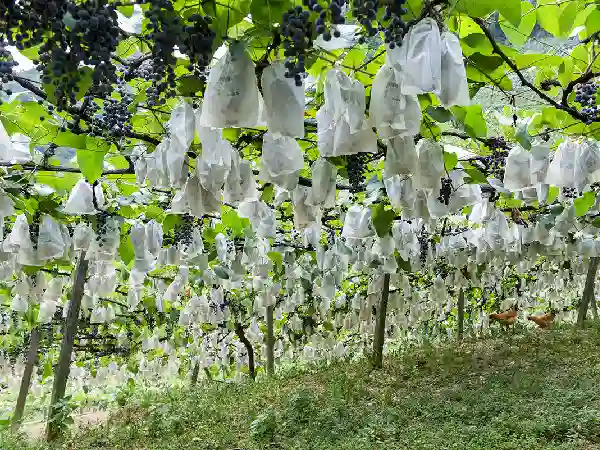
Grapes protected by bags
However, for larger birds like gray magpies and crows, this method might be less effective, as they can often peck through the bags and continue to damage the grapes. Therefore, when dealing with these “big guys,” you may need to consider other, more effective protection methods.
Overall, bagging is a cost-effective and convenient method, but when dealing with larger birds, it’s best to combine it with other bird control measures.
3. Visual Deterrents
Visual deterrents use birds’ fear of unusual objects or light to scare them away. You can hang reflective tape, old CDs, scarecrows, kites, eye balloons, or even use lasers to keep birds at bay in your vineyard.
Reflective tape and old CDs create flashing lights as they sway in the wind, deterring birds.
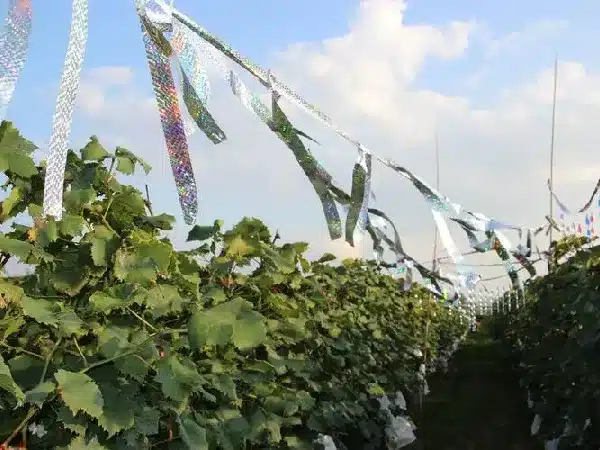
Reflective ribbons used to deter birds in a vineyard
Scarecrows make birds think there is a “person” guarding the vineyard, so they naturally keep their distance.
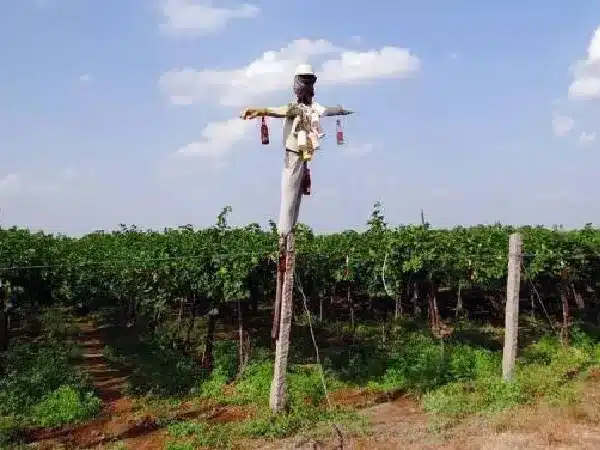
A scarecrow guarding the vineyard
Kites mimicking predatory birds take advantage of the birds’ natural fear of predators, causing them to stay away.
Eye balloons imitate the eyes of large birds, scaring smaller birds away.
As for lasers, they are a new technology. Although there is limited data supporting their effectiveness in crop protection, grower experiences suggest that lasers are promising.
However, birds are not stupid—they may become accustomed to these deterrents over time. To maintain effectiveness, you should regularly change the position or type of deterrent to keep these “tricks” from losing their impact.
Overall, visual deterrents are low-cost and easy to install, making them particularly suitable as an auxiliary bird control measure. When used in combination with other protection methods, the effect will be even more significant.
4. Sound Deterrents
Sound deterrents work similarly to visual deterrents but use noise to scare birds away. You can use sound devices, cannons, or speakers to create noise or play predator sounds to keep birds from approaching your vineyard.
Sound devices or speakers typically play the calls of predatory birds or other sounds that threaten birds, making them avoid the “danger zone.” Cannons, on the other hand, create irregular loud noises, simulating gunshots or explosions, to frighten the birds away.
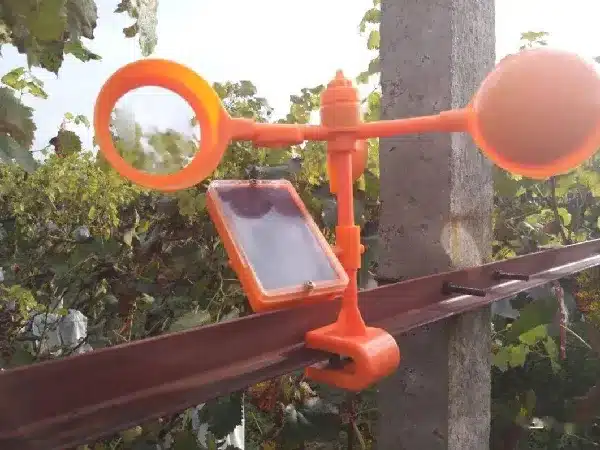
A bird deterrent device combining sound and light
With the development of acoustic technology, a new type of shockwave bird deterrent has emerged. It combines shockwaves, ultrasound, infrasound, concentrated loud sounds, predator calls, and shock cannons to randomly stimulate the birds with energy, forcing them away from the vineyard without causing harm.
However, like visual deterrents, birds may adapt to these sounds over time. Therefore, you need to regularly change the type and frequency of the sounds to maintain effectiveness. We recommend using sound deterrents as an auxiliary tool in combination with other protection measures for better results.
5. Decoy Crops
Decoy crops involve planting bird-attractive plants around or near your vineyard to draw them away from your grapes. For example, grain crops or sunflowers are bird favorites and might lure birds away from your grapes to enjoy these “delicacies” instead. If you are a small vineyard owner, you can also scatter grains or other foods that birds like around the area to attract them.
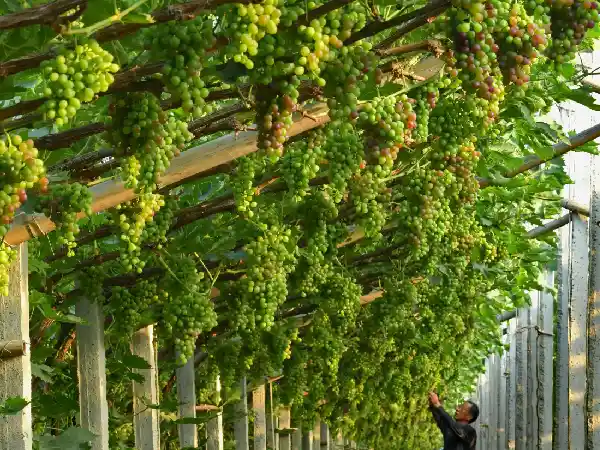
A vineyard in full harvest
While this method is natural and eco-friendly, it’s not as easy to implement as it sounds. You need a deep understanding of local bird habits to effectively plan where to plant. In addition, you must manage these plants well to prevent pests and weeds from invading. So, if you’re an environmental enthusiast, this method sounds great, but it might require considerable skill and patience in practice.
6. Using Predators
Introducing natural predators of birds is an effective bird control strategy. For example, attracting hawks, owls, or other raptors to your vineyard, or even keeping a cat, can help. Cats not only catch birds but might also take care of any mice around. But be careful; they might also knock over your grape trellises! You can also place raptor models around the vineyard to scare away birds eyeing your grapes.
In practice, many prefer using raptor models since attracting real predators requires specific environmental conditions and may need extra maintenance. Of course, if you run a large vineyard, you might consider hiring a professional bird handler to manage these predators.
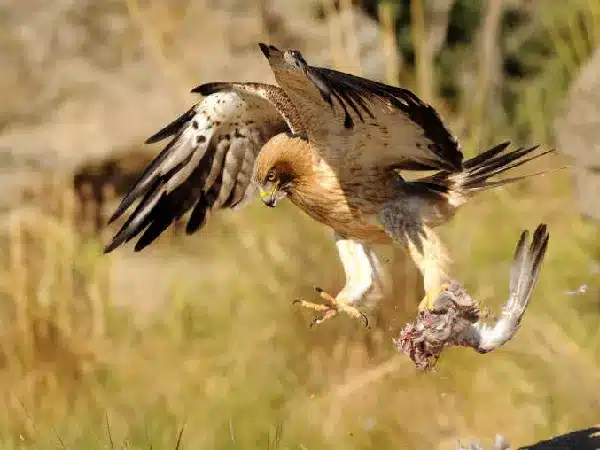
A hawk capturing a bird
Although fake predators are time-saving and labor-saving and can provide some deterrence, to maintain effectiveness, you need to regularly move them or change their appearance. In conclusion, whether you use real or fake predators, it’s best to combine them with other bird control measures for better results.
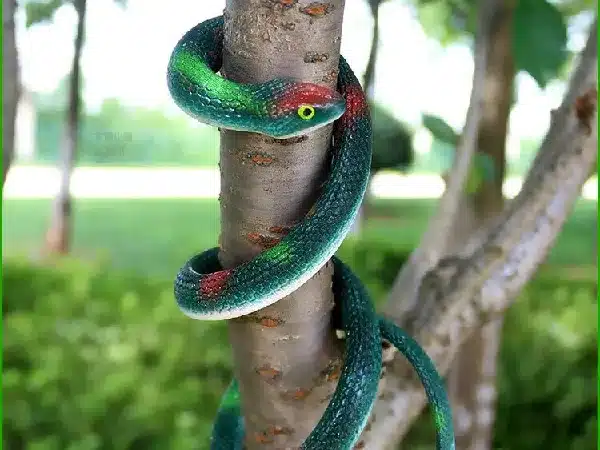
A snake decoy
7. Chemical Bird Repellents
We’ve discussed various physical bird control methods; now let’s talk about a chemical approach—chemical bird repellents.
Chemical bird repellents continuously release a special scent that affects the birds’ nervous and respiratory systems, making them uncomfortable and discouraging them from pecking at your grapes. However, it’s important to strictly follow the dosage instructions. Also, consider weather conditions like temperature, sunlight, and wind speed when spraying, as inappropriate weather can greatly diminish the repellent’s effectiveness.
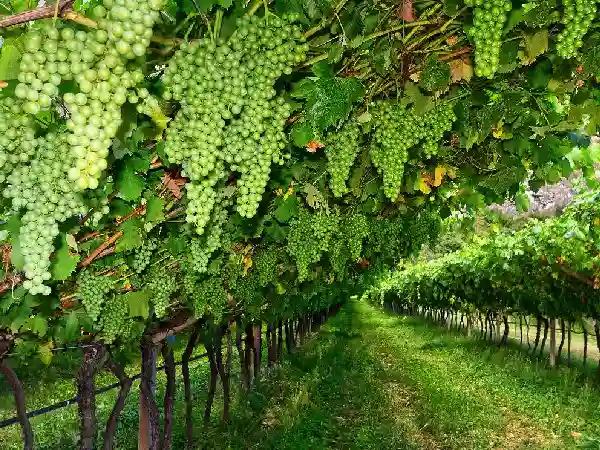
A large vineyard
However, chemical bird repellents have always been a controversial topic in grape growing. Formal research provides little evidence of their effectiveness, but they are widely used and available. Although most repellent manufacturers claim they are harmless to humans and leave no harmful residues when used correctly, some growers still worry that chemicals might affect the flavor of the grapes.
Overall, chemical bird repellents can be an effective bird control method if used strictly according to the instructions. But before you decide to use them, be sure to check whether their use is allowed by local government or agricultural authorities. After all, compliance and grape quality are equally important.
Conclusion
In conclusion, there are various strategies available for protecting your grapes from birds, each with its own advantages and disadvantages. There are physical methods, natural eco-friendly methods, and chemical methods. However, when choosing bird control strategies, consider the specific conditions of your vineyard and local regulations. Ultimately, the best protection method often involves a combination of strategies, which can not only ensure a good harvest but also protect your market reputation and long-term profits.
For more information on bird nets or agricultural nets, feel free to contact INSONSHADE.
